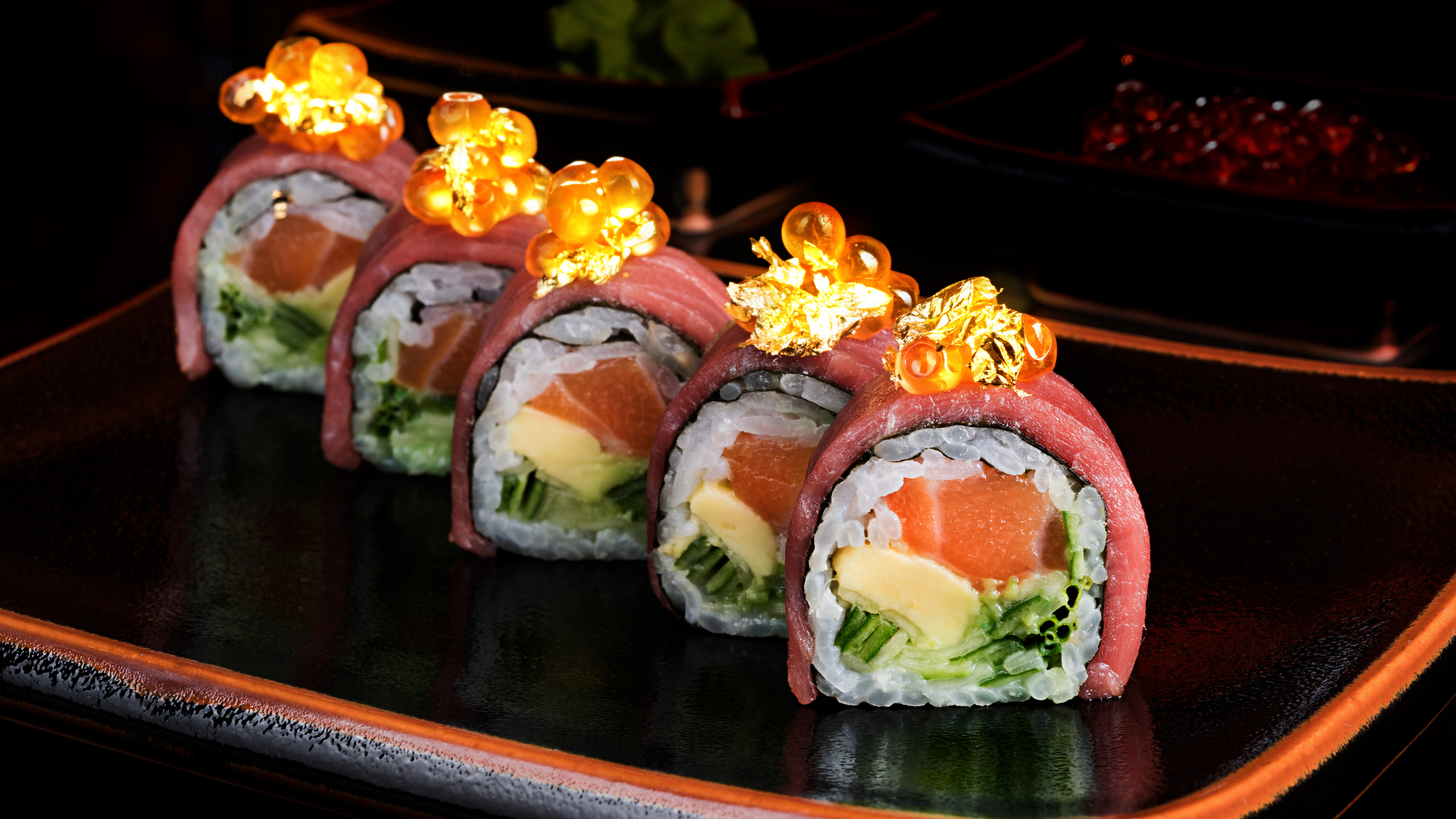What Exactly Is Edible Gold? ¯\_(ツ)_/¯
Once the provenance of European chocolatiers and elite Japanese sushi chefs, you'll now find edible gold atop everything from Popeye's fried chicken to hamburgers. Thousands of years after it was first ingested as a consumable status symbol, edible gold is mainstream. But is this real gold, like gold-brick gold? And is it safe to eat?
In its press release announcing the champagne-brined, gold-flecked chicken, Popeye's said it used 24-karat gold to dust the limited-edition wings—and that's probably true. To be considered edible, gold must be 24k or 23k, which is a higher purity than most gold jewelry. The U.S. Food And Drug Administration doesn't offer any explicit guidelines for edible gold, which a spokesperson for the Academy of Nutrition and Dietetics told me is "atypical"—I personally can't think of another edible product that the FDA doesn't regulate.
But companies that sell edible gold leaf or foil or dust in the U.S. say they comply with European Union rules for edible gold, which are more standardized. Seeking to update its regulations on edible gold from the previous ones written in 1975, the European Food Safety Authority conducted a reassessment of edible gold products in 2016. The scientific breakdown is a bit of a slog, but the upshot is the committee concluded a moderate amount of gold is safe for consumption. Because gold is so resistant to dissolving in water or the body, "systemic effects of elemental gold would not be expected."
Whitney Linsenmeyer, a registered dietician and spokesperson for the Academy of Nutrition and Dietetics, put it more simply: "Gold is biologically inert and therefore doesn't break down during normal digestive processes. Any gold consumed will likely be excreted from the body as waste."
So, gold enters your system, floats through it, and exits.
And yes, she confirms, that's real gold you're eating: "Edible gold is required to be 23 or 24 carats, which is more pure than a piece of gold jewelry that may contain other potentially harmful metals."

To find out how it's made, I call up Denny Fisher, owner of CornucAupia, a Sarasota, Florida-based company that manufactures gold products, including gold sheets and foil for edible and cosmetic use. (The 'Au' in his company name, a twist on the word cornucopia, refers to gold's elemental symbol.)
Fisher had decades of experience in the jewelry business before he began manufacturing edible gold. He tells me the two products use the same raw material: conflict-free gold bars or gold grain mined in compliance with federal regulations. Gold grain is just gold in a smaller, round form—they sort of like ball bearings—but is still 99.9 percent pure.
Once his company buys the raw material, it's melted down by temperatures of about 2,200 degrees Fahrenheit. It's then cast into squares or rectangles and rolled into thin sheets, and then those sheets are sandwiched between layers of special plastic to be compressed into thinner and thinner widths and longer and longer strips. Swiss company DeLafee Of Switzerland illustrates a similar process with photos if you want to follow along.
"Most of the process itself is done by hand, because even after 5,000 years since this process has been discovered, not much has been developed as a tool to speed up the process or make it more mechanized," Fisher tells me. "These days, everyone wants it fast and quick, and that's the complete opposite of the gold leaf process."
Because edible gold-making businesses tend to be family owned from generation to generation—and because the process is a laborious pain in the butt—Fisher tells me he's one of only 16 such companies worldwide that he knows of, and the only one in North and South America. Most I can find are in Europe and Australia.
Their goods retail for about 15 cents per square inch, and you can buy them for yourself on Amazon and from cake- or pastry-decorating websites. Be forewarned, though, that their appeal is strictly cosmetic—gold doesn't taste like much of anything.
"Because of its lightness, when it's on your mouth, on your tongue, you don't really feel or taste anything," Fisher says. "If you really wanted you could eat a spoonful, but it's not going to do anything."
Some manufacturers hawk gold foil as a cosmetic cure-all, claiming it has anti-aging properties and was favored by Cleopatra and the queen of the Ch'ing dynasty as a beauty aid. But eating it won't do you much good.
"The very small quantity of gold typically consumed in desserts or cocktails is most likely safe," Linsenmeyer says. "But there are no known health benefits to consuming gold either."
